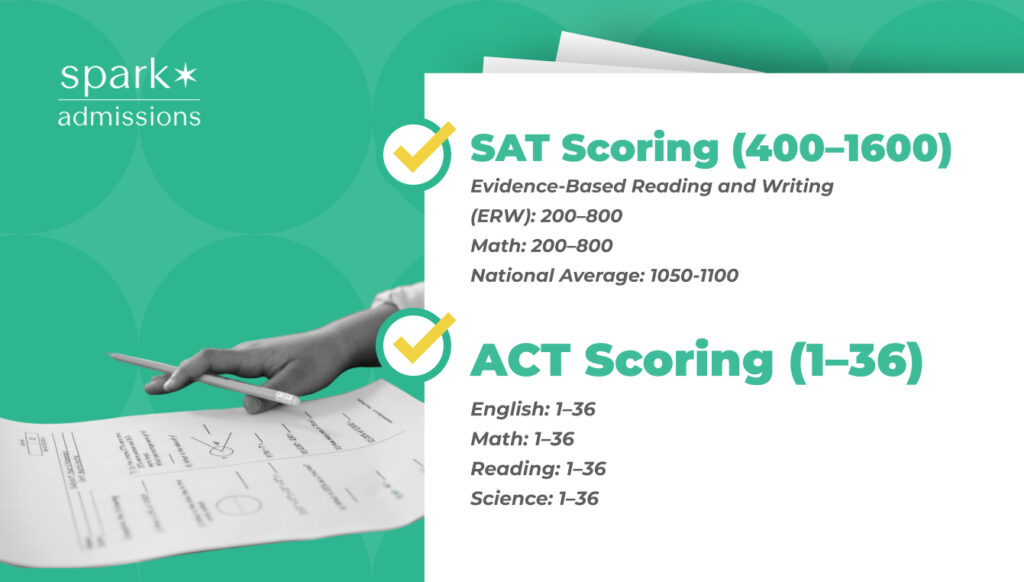- Blog
- > Navigating High School
Digital SAT vs. ACT: Which One Should You Choose?
- Dr. Rachel Rubin
- | June 3, 2025

High school students face many decisions when it comes to preparing for the multi-faceted college application process, and one of the most crucial is choosing between the new digital SAT and the ACT. With both tests being widely accepted by colleges and universities, it’s essential to understand the differences between them to make an informed choice. While some schools have remained test-optional, or even test-blind, many prestigious schools still value a strong standardized test score when evaluating your candidacy as a prospective student. With the SAT’s transition to a digital-only format and the ACT offering a paper-based or digital option, there are new factors to consider. In this guide, we’ll delve into the essential differences between the digital SAT and the ACT to help you navigate this important decision.

Structure and Format
Digital SAT: The digital SAT contains sections on reading, writing and language, and math using computer-based tools. Math is half of the SAT, so this test may be better for students who perform significantly better on the math portion of the test. Additionally, according to the College Board, which administers the SAT, students receive 67% more time per question than on the ACT, so students who struggling with timing on standardized tests might perform better on the SAT.
ACT: The digital ACT and paper-based ACT will be identical to each other. It is up to the student to indicate which one they prefer when registering for the test. The ACT sections include English, math, reading, science, and an optional writing portion. The ACT is only 25% math, so it may be a better option for students who don’t perform well on the math portion of the test. In addition, the ACT has been known to have more straightforward questions, and some students find it a little easier to raise their scores on it versus the SAT. However, there are more questions per minute, so students must move more quickly through the test.
Calculator Tools
SAT: One notable feature of the digital SAT is the built-in Desmos graphing calculator, which is available throughout the entire math section. This tool offers advanced graphing functions that can help students visualize equations, solve problems faster, and avoid manual graph plotting. It’s especially useful for students who are comfortable using digital math tools and can streamline complex algebra or geometry questions. Since it’s integrated into the test platform, there’s no need to bring or manage your own calculator.
ACT: The ACT allows students to bring their own calculator, but it does not provide a built-in option during the test. While most students use standard scientific or graphing calculators like the TI-84, the experience depends entirely on how familiar you are with your device. This may be a drawback for students who struggle with setting up their calculators efficiently or are not as comfortable navigating different functions under time pressure.
Content
SAT: The digital SAT focuses more on vocabulary, analytical reading, and mathematical reasoning. The test contains an adaptive testing feature that will design the second module of each section based on your performance in the first. What this means is that the questions will be easier or harder as the test goes on based upon how you have performed during the beginning of the test. This feature could have a significant psychological impact on students as they sense how the test is going based upon the difficulty of the questions.
ACT: On the other hand, the ACT emphasizes grammar, punctuation, and science reasoning, in addition to reading and math. The science section doesn’t necessarily require prior scientific knowledge; rather, it assesses your ability to interpret data and draw conclusions. Neither the digital nor the traditional ACT adapt during the test based upon your performance, which is an enormous plus for the test, as this standard approach will give students more confidence.

Scoring
SAT: The SAT is scored on a scale of 400 to 1600, combining scores from the two main sections: Evidence-Based Reading and Writing (ERW) and Math. Each section is scored on a scale of 200 to 800.
ACT: The ACT is scored on a scale of 1 to 36, with each of the four sections (English, math, reading, and science) receiving a scaled score. These scores are averaged to obtain your composite score, rounded to the nearest whole number. If, for example, you receive a 27.5, that is rounded up to a 28 composite score. Also, since there are four sections, it is sometimes easier to get a higher superscore among several tests since students tend to vary how they perform in each second across several test sittings. This, of course, is only relevant for colleges that accept superscoring for the ACT, but many of them do. When determining what is a good ACT score for Ivy League admissions, aim for a composite score within the 32-36 range, as this places you among the top applicants.

Test Length
SAT: The digital SAT is approximately 2 hours and 15 minutes in length. This duration alone is a notable difference when comparing the digital test to its previous, hard-copy counterpart, which took students nearly four hours to complete.
ACT: The digital ACT takes around 2 hours and 55 minutes (without the essay), with an extra 40 minutes for the optional writing section. Colleges do not require the ACT essay and many do not even consider the essay section, so we recommend that students do not register for the essay portion of the ACT.
Availability and Timing
SAT: The digital SAT is given seven times throughout the year. Now that the test is digital, scores are typically available within a few days after the test date.
ACT: While the digital ACT also provides rapid score delivery, the availability of test dates may vary depending on test center locations, as the ACT is still mainly focused on being a paper-based test. The paper-based ACT is also given seven times a year.
Accessibility and Equity Considerations
SAT: With the transition to a digital-only format, the SAT introduces new challenges for students with limited access to technology or lower levels of digital literacy. Although the College Board has committed to providing loaner devices to students who need them, this offering doesn’t always level the playing field—especially for those who may not be comfortable navigating adaptive online testing environments. Students without regular access to reliable internet or computer-based testing tools may find that the digital format adds an extra layer of stress.
ACT: The ACT still offers a traditional paper-based format, which can be a major advantage for students who prefer a familiar, low-tech testing experience. This option reduces concerns about device availability or technical issues on test day. For students in under-resourced schools or areas where digital access is limited, the paper-based ACT may offer a more equitable and accessible path to submitting a competitive score.
Personal Preference and Strengths
Consider your strengths and weaknesses in each subject area. Choose the test that aligns with your skills and provides the best opportunity to showcase your abilities. In particular, determine whether math is a strength of yours or not, since math is 50% of the digital SAT and only 25% of the ACT.
Regardless, it is crucial to take practice tests for both the digital SAT and the ACT to see which test feels better to you. Doing so is the best way to determine the test for which you ought to study.
Test Prep Resources
There are considerably fewer test prep resources available for the digital SAT at this juncture because it was only implemented in March 2024. So, from a preparation perspective, there is no question that the ACT will have better test prep resources and many more practice tests.
Test-Optional Policies and Changing Admissions Trends
SAT: Although the SAT remains optional at many colleges, recent shifts among top-tier institutions suggest that strong scores are regaining importance. For example, Dartmouth College has announced it will reinstate a standardized testing requirement starting with future admission cycles. Other Ivy League schools and highly selective universities may follow suit. For students considering the SAT, particularly those with strong math skills or solid test-taking strategies, earning a strong score is an opportunity to stand out—especially as fewer applicants submit scores.
ACT: The same trend applies to the ACT. While test-optional policies are still in place at many schools, there’s been renewed discussion around the value of standardized testing in evaluating applicants. Submitting a competitive ACT score—especially in the 32–36 range—can enhance your application at elite institutions. Students applying to schools that recently updated their policies should check individual college websites to determine current score submission expectations.
Align the Test with Your Strengths and Strategy
When choosing between the digital SAT and the ACT, carefully consider the differences in structure, content, scoring, timing, your personal preferences, how you do on baseline testing, and the availability of test prep resources. Colleges will consider either exam for admissions, so we advise students to assess which test results in their highest score and/or where they feel most confident, then focus on improving their score on that particular test.
Remember, both tests are designed to assess your readiness for college, so prepare diligently and showcase your strengths on whichever test you choose. If you are looking for more guidance on how to determine the best standardized testing approach, reach out to one of our expert admissions consultants today. Let us help you design a personalized roadmap that will set you up for strong scores ahead!


